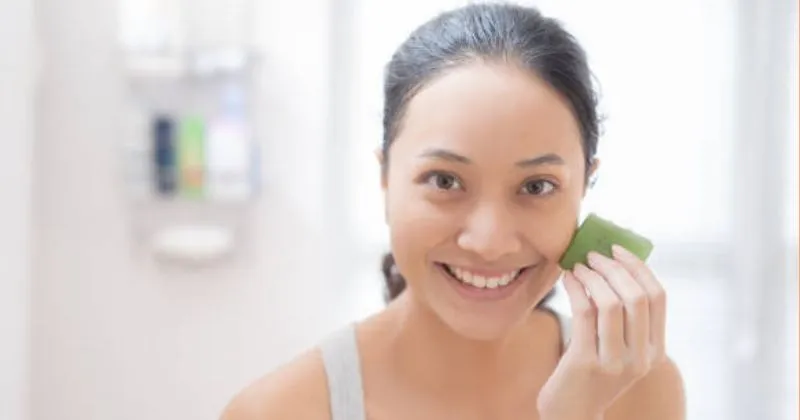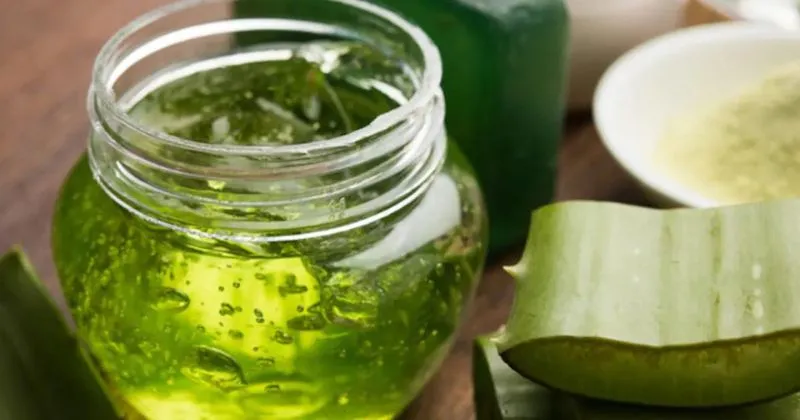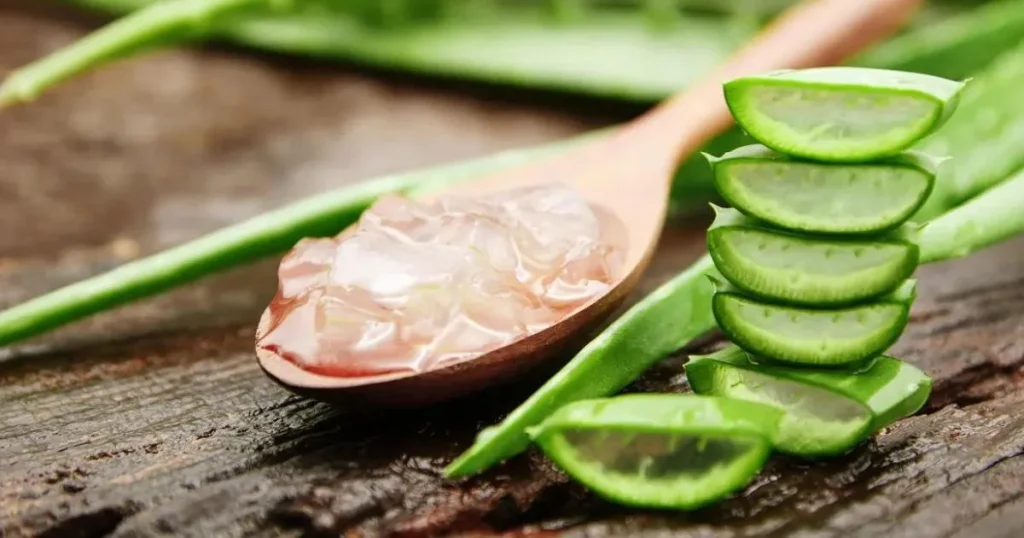Acne is a common skin problem that affects many people, especially teenagers. It can cause pimples, blackheads, and red spots on the face and body. Acne not only changes how your skin looks but can also make you feel embarrassed or unhappy.
Aloe vera is a plant known for its healing properties. Its leaves contain a thick, clear gel that can soothe and heal the skin. People have used aloe vera for many skin issues, including acne. In this article, we will guide you on how to use aloe vera for acne treatment. You will learn why aloe vera works, how to apply it, and some helpful tips to get the best results.
Understanding Acne
What is Acne?
Acne is a skin condition when your hair follicles get clogged with oil and dead skin cells. This can lead to different blemishes, such as pimples, whiteheads, and blackheads.
Causes of Acne
Several factors can cause acne, including:
- Hormones: During puberty, your body produces more hormones, producing more oil.
- Diet: Eating lots of sugary or greasy foods can sometimes worsen acne.
- Stress: High-stress levels can trigger acne flare-ups.
- Genetics: If your parents had acne, you might also be more likely to get it.
Types of Acne
There are several types of acne, including:
- Whiteheads: Small, white bumps caused by clogged pores.
- Blackheads: Small, dark spots that form when a pore is clogged but remains open.
- Pimples: Red, inflamed bumps filled with pus.
- Cystic Acne: Large, painful lumps under the skin, filled with pus.
Common Treatments for Acne
Many treatments are available for acne, but they only sometimes work for some. Some common treatments include:
- Over-the-counter creams and gels often contain ingredients like benzoyl peroxide or salicylic acid.
- Prescription medications: Stronger creams, antibiotics, or even oral medications prescribed by a doctor.
- Home remedies: Natural treatments like tea tree oil or honey.
Each of these treatments has its limitations and might not work for everyone. Some people may experience side effects or find that their acne doesn’t improve.
Benefits of Aloe Vera for Acne

Aloe vera is a succulent plant known for its thick, fleshy leaves containing clear gel. This gel is packed with vitamins, minerals, and other compounds, making it excellent for skin care, especially for treating acne.
Overview of Aloe Vera Plant and Its Components
The aloe vera plant is rich in beneficial substances. The gel inside the leaves contains vitamins A, C, and E, which are antioxidants that help protect your skin. It also has enzymes that reduce inflammation and amino acids that help repair skin. These components work together to make aloe vera a powerful natural remedy for acne.
Anti-Inflammatory Properties
One of the key benefits of aloe vera is its anti-inflammatory properties. When you have acne, your skin becomes red and swollen. Aloe vera gel can help reduce this inflammation. Applying the gel to your skin can soothe the irritation, making the pimples less noticeable and painful.
Antibacterial Effects
Aloe vera also has antibacterial properties. Bacteria are one of the main causes of acne, leading to infections that form pimples. The compounds in aloe vera gel can kill these bacteria, helping to prevent new pimples from forming. Aloe vera helps keep your pores clean and clear by reducing the bacterial load on your skin.
Healing and Soothing Properties
Aloe vera is well-known for its healing properties. If you have acne, your skin can become damaged. The gel helps speed up the healing process of your skin cells. It can reduce scarring and promote the growth of new, healthy skin. Aloe vera also soothes the skin, relieving the itchiness and discomfort often associated with acne.
Benefits for Skin Hydration and Repair
Keeping your skin hydrated is crucial for preventing and treating acne. Dry skin can lead to overproduction of oil, which can clog pores and cause pimples. Aloe vera gel is a natural moisturizer that helps to keep your skin hydrated without making it greasy. It also repairs the skin barrier, protecting it from further damage and maintaining health.
How to Use Aloe Vera for Acne Treatment

Direct Application of Aloe Vera Gel
Aloe vera gel is an excellent natural remedy for acne [1]. Here’s how you can extract it from an aloe vera leaf:
- Choose a Leaf: Pick a thick, healthy aloe vera leaf from the plant.
- Wash and Dry: Rinse the leaf thoroughly to remove dirt and dry it with a clean cloth.
- Trim Edges: Cut off the sharp edges on both sides of the leaf using a knife.
- Peel the Leaf: Use a knife or a peeler to carefully remove the green skin on one side, exposing the clear gel inside.
- Scoop Out the Gel: Scoop out the clear aloe vera gel with a spoon and transfer it into a clean bowl.
Step-by-Step Application Process
- Cleanse Your Face: Wash your face with a gentle cleanser and pat it dry.
- Apply the Gel: Take a small amount of fresh aloe vera gel directly to your acne-prone areas or all over your face.
- Massage Gently: Using your fingertips, gently massage the gel into your skin in circular motions.
- Leave It On: Allow the gel to stay on your skin for 20-30 minutes.
- Rinse Off: Rinse your face with lukewarm water and pat it dry.
Frequency of Use
For best results, use fresh aloe vera gel twice daily—once in the morning and once before bedtime.
Aloe Vera Face Masks
Aloe Vera and Honey Mask
- Ingredients: 2 tablespoons of fresh aloe vera gel and one tablespoon of honey.
- Instructions: Mix the aloe vera gel and honey until well blended. Apply the mixture to your face, avoiding the eye area. Leave it on for 20 minutes, then rinse off with warm water.
Aloe Vera and Turmeric Mask
- Ingredients: 2 tablespoons of fresh aloe vera gel, one teaspoon of turmeric powder.
- Instructions: Combine the aloe vera gel and turmeric in a bowl. Apply the paste to your face, focusing on acne-prone areas. Leave it on for 15-20 minutes before washing it off with lukewarm water.
Application Instructions
- Cleanse Your Face: Always start with a clean face.
- Apply Evenly: Spread the mask evenly over your face.
- Relax: Allow the mask to sit for the recommended time.
- Rinse Thoroughly: Use lukewarm water to wash off the mask completely.
- Moisturize: Follow up with a light, non-comedogenic moisturizer.
Aloe Vera as a Spot Treatment
Using Aloe Vera Gel for Targeted Treatment
Aloe vera can be used as a spot treatment for pimples. Here’s how:
- Clean the Area: Wash your face and pat it dry.
- Apply the Gel: Dab a small amount of fresh aloe vera gel directly onto the pimple.
- Let It Dry: Allow the gel to dry naturally. Do not rinse it off.
- Repeat: Apply the gel to the affected area twice daily until the pimple heals.
Aloe Vera, in Combination with Other Natural Ingredients
Aloe Vera and Tea Tree Oil
- Ingredients: 2 tablespoons of fresh aloe vera gel, 2-3 drops of tea tree oil.
- Benefits: Tea tree oil has antibacterial properties that help reduce acne.
- Precautions: Tea tree oil is potent; do not use more than recommended to avoid irritation.
Aloe Vera and Lemon Juice
- Ingredients: 2 tablespoons of fresh aloe vera gel, one teaspoon of lemon juice.
- Benefits: Lemon juice has natural astringent properties that can help dry out pimples.
- Precautions: Lemon juice can make your skin sensitive to sunlight, so use this mixture at night and wash it off in the morning.
Benefits and Precautions
- Benefits: Combining aloe vera with other natural ingredients can enhance its effectiveness in treating acne.
- Precautions: Always do a patch test before applying new mixtures to your face. If you experience any irritation, discontinue use immediately.
By following these methods, you can effectively use aloe vera to help treat acne and achieve clearer skin.
Tips for Using Aloe Vera Effectively
Choosing the Right Aloe Vera Product (Fresh vs. Store-Bought)
When using aloe vera for acne, choosing the right product is essential. Straight from the plant, fresh aloe vera gel is the best option. It’s pure and contains no additives. To extract the gel, cut a leaf, wash it, and scoop the clear gel inside. Store-bought aloe vera can be convenient but look for products that list aloe vera as the main ingredient and have no added fragrances or chemicals.
Patch Testing for Allergies
Before applying aloe vera to your entire face, do a patch test. Apply a small amount of aloe vera gel on your inner arm and wait 24 hours. If there’s no redness or itching, it’s safe to use on your face. This step helps prevent any allergic reactions.
Consistency and Patience with Natural Treatments
Using aloe vera for acne requires consistency and patience. Apply it daily for the best results. Natural treatments often take longer to show effects compared to chemical treatments, but they are usually gentler on the skin.
Avoiding Overuse and Potential Side Effects
Using too much aloe vera can irritate your skin. Apply a thin layer once or twice a day. Overuse can cause redness or a rash, especially if you have sensitive skin. Always listen to your skin and stop using aloe vera if you notice any adverse reactions.
Potential Side Effects and Precautions
Common Side Effects
While aloe vera is generally safe, some might experience side effects like skin irritation or allergic reactions. These can include redness, itching, or a rash. If you notice any of these symptoms, stop using aloe vera immediately.
Who Should Avoid Using Aloe Vera
Only some people should use aloe vera. Avoid aloe vera if you have sensitive skin or are allergic to plants in the lily family (like garlic or onions). Also, if you’re pregnant or breastfeeding, consult with a healthcare provider before using it.
When to Consult a Dermatologist
If your acne doesn’t improve after using aloe vera for a few weeks or gets worse, consult a dermatologist. A professional can provide advice tailored to your skin’s needs and may recommend other treatments.
Aloe vera is a powerful natural remedy for treating acne. Its soothing and healing properties make it an excellent choice for many people struggling with breakouts. Remember, while aloe vera can help with acne, it’s essential to be patient and consistent with its use.
Before starting any new skincare routine, it’s always a good idea to do a patch test to ensure you don’t have any allergic reactions. If your acne is severe or doesn’t improve, you should see a healthcare professional for advice and treatment options.
Frequently Asked Questions
Can I use aloe vera for all types of acne?
Yes, aloe vera can help with various types of acne, including pimples, blackheads, and whiteheads, due to its anti-inflammatory and antibacterial properties.
How often should I apply aloe vera to my skin?
You can use aloe vera gel twice daily, in the morning and before bed, for the best results.
Can aloe vera worsen my acne?
Aloe vera is generally safe and beneficial for most people. However, if you notice irritation or worsening acne, stop using it and consult a doctor.
Is it better to use fresh aloe vera or store-bought gel?
Fresh aloe vera is often more effective because it’s pure and natural. Store-bought gels can also work, but ensure they contain a high percentage of aloe vera and minimal additives.
How long will it take to see results?
Results can vary, but you might start noticing improvements within a few weeks with regular use. Be patient and consistent with your skincare routine.
- How to Use Aloe Vera for Acne: A Comprehensive Guide - June 1, 2024
- Jojoba Oil for Hair: How to Use for Maximum Benefits - May 19, 2024
- 8 Benefits of Jojoba Oil for Skin: The Ultimate Guide - May 18, 2024



